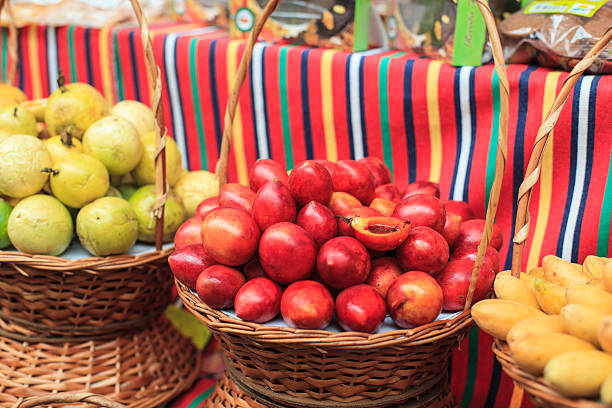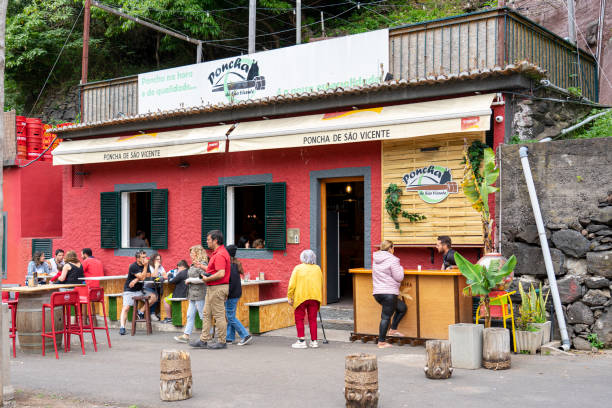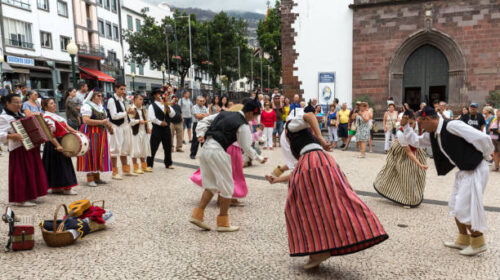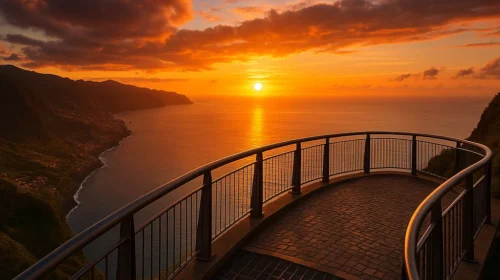History of the Mercado dos Lavradores: An Icon of Funchal
In the heart of Funchal, the capital of Madeira Island, the Mercado dos Lavradores (Farmers’ Market) stands as a true symbol of Madeiran culture.
More than just a place to buy fresh produce, this market is a vibrant hub where tradition, flavour, and colour come together in an authentic atmosphere.
Opened in 1940, it continues to captivate both locals and visitors with its unique architecture and lively spirit.
The origins of the Mercado dos Lavradores
The story of the Mercado dos Lavradores began in the 1930s, during a time when Madeira was modernising its public infrastructure. The design was entrusted to architect Edmundo Tavares, who created an elegant and functional building, rooted in regional identity.
Construction started in 1939 and the market was officially inaugurated on 24 November 1940.
From the outset, the goal was to centralise the sale of fresh goods and provide dignity to the farmers and fishermen who supplied the city. The location—on Rua Latino Coelho, right in Funchal’s historic centre—was ideal for accessibility and integration into urban life.
Unique architecture with local symbolism
What sets the Mercado dos Lavradores apart is its architectural style, influenced by the Estado Novo era, blending modernist features with local elements. The building is organised around a spacious central courtyard, with balconies and galleries across multiple levels that house vendors grouped by type of product.
One of the most striking features is the decorative tilework adorning the façade and interior walls. These traditional Portuguese azulejos, created by the renowned Viúva Lamego Ceramics Factory in Lisbon, depict scenes of rural life in Madeira, paying tribute to the island’s agricultural and maritime roots.
The fish market, located on one of the lower floors, is particularly famous for its freshness and diversity. This is where one finds the iconic black scabbardfish, a species native to Madeiran waters and visually unique.
The market’s social role through the decades
Since its inauguration, the Mercado dos Lavradores has played a vital role in Funchal’s social and economic life. It’s not just a market—it’s a meeting point where generations gather to shop, exchange ideas, and keep local traditions alive.
Farmers from rural parts of the island continue to bring their fresh goods to the market. Tropical fruits such as Madeira bananas, passionfruit, cherimoya (anona), and tamarillo are sold alongside vegetables, aromatic herbs, and exotic flowers like strelitzias and proteas.
A must-see tourist destination in Funchal
With Madeira’s increasing popularity as a travel destination, the Mercado dos Lavradores has become one of the most visited attractions in Funchal. For many travellers, it offers an authentic introduction to local life. The vibrant atmosphere, intense aromas, and colourful displays create a full sensory experience.
Visitors can often be seen sampling unfamiliar fruits, taking photos of the floral arrangements, or watching fishmongers skillfully clean and prepare fish. Many also buy culinary souvenirs, such as sugarcane honey, Madeira wine, artisan liqueurs, jams, and local spices.

Cultural importance and enduring symbolism
The market’s significance goes far beyond its commercial function. It represents a living link between Madeira’s past and present. It celebrates local production, face-to-face interaction, and the cultural richness of the island’s people.
Its importance is such that the market frequently appears in travel documentaries, cultural books, and even postcards. It also hosts events like tastings, themed fairs, and regional product showcases, reinforcing its role as a cultural landmark.
A taste of Madeira all in one place
One of the market’s greatest attractions is the chance to experience Madeiran cuisine firsthand.
Around the stalls and in small eateries inside the building, visitors can sample traditional dishes such as:
- Espetada (meat skewers cooked on laurel wood)
- Bolo do caco (local flatbread with garlic butter)
- Traditional soups like wheat or tomato and onion
- Poncha, the famous drink made from sugarcane spirit, honey, and lemon juice
These dishes reflect the island’s culinary heritage—simple ingredients prepared with traditional techniques and a mix of European and African influences.

Practical tips for visiting the Mercado dos Lavradores
If you’re planning to visit this Funchal icon, here are some tips to enhance your experience:
Best day to visit: Friday morning, when the market is at its most vibrant and selection is widest.
Opening hours: Monday to Friday from 7:00 AM to 7:00 PM; Saturdays until 2:00 PM. Closed on Sundays and public holidays.
Insider tip: Some fruit vendors charge higher prices to tourists, especially for exotic fruits. Compare prices or ask before purchasing.
How to get there: Located centrally in Funchal, it’s easily accessible on foot or by public transport from most areas of the city.

Preserving the past for future generations
While the market remains a lively and beloved space, it also faces modern-day challenges. Increased tourism, supermarket competition, and urban development demand constant adaptation.
Fortunately, local authorities and the community have taken steps to preserve its authenticity. Initiatives promoting local products, urban renewal projects, and educational campaigns all contribute to safeguarding the market’s heritage and role in daily life.
More than just a city landmark
Though the Mercado dos Lavradores is rooted in Funchal, its influence spans the entire island. It represents a way of life—based on community, respect for tradition, and pride in local production.
Visitors leave not just with bags of tropical fruit or spice blends, but with memories, stories, and a deeper appreciation for Madeiran culture. That is perhaps the greatest souvenir one can take from a trip to this Atlantic island.
Conclusion
A visit to the Mercado dos Lavradores is more than a tourist stop—it’s a cultural immersion. It’s a space where the past still matters, where personal interaction trumps barcodes, and where every stall holds a tale.
As a cultural icon of Funchal, the market continues to connect city and countryside, sea and mountains, locals and travellers.
Whether you’re buying flowers, tasting poncha, or simply wandering through the colourful alleys, the Mercado dos Lavradores invites you to feel the true soul of Madeira.





OK